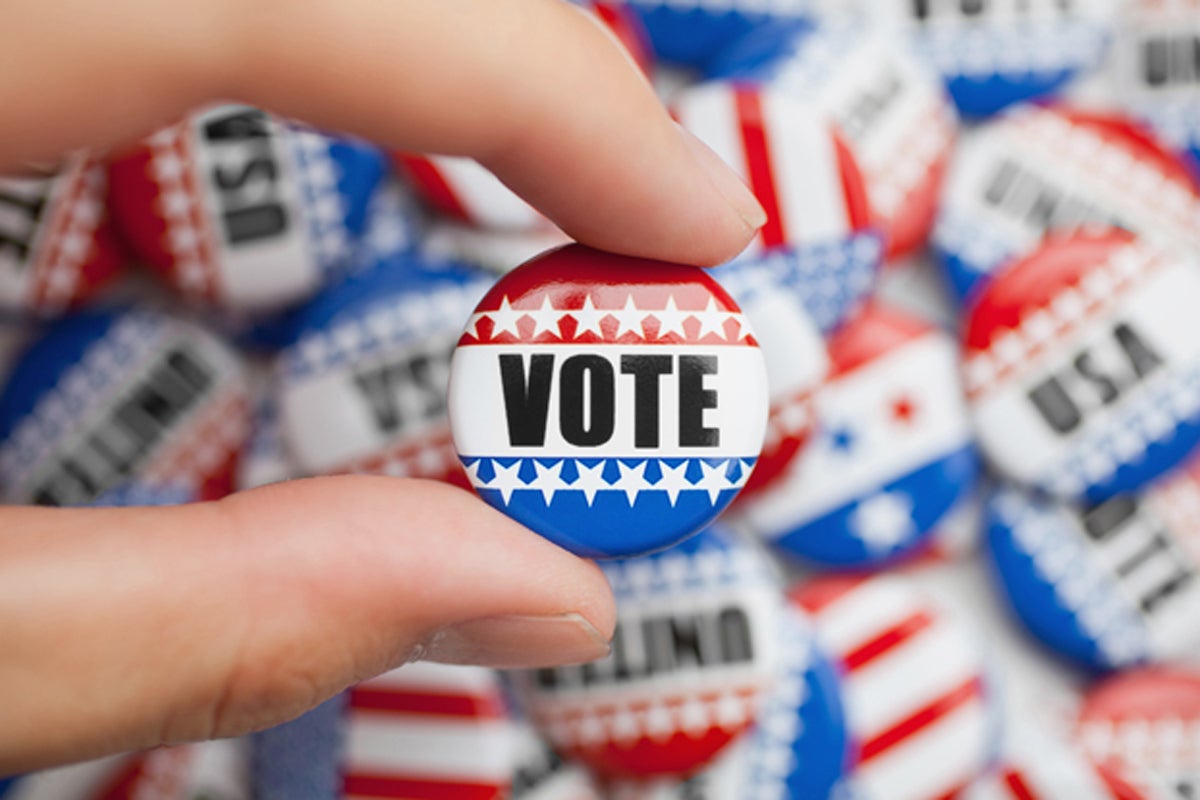Main St. Madness: Input solicited on downtown projects
Published 10:10 am Monday, March 25, 2019

- Ryan Sandwick, community design specialist with Community & Economic Development Initiative of Kentucky and the Department of Landscape Architecture, helps Rachel Alexander, executive director of Main Street Winchester, install polling bins for a 'Main Street Madness' Downtown Bracket event. (Photo by Lashana Harney)
A new kind of March Madness arrived in downtown Winchester Friday.
Rachel Alexander, executive director of Main Street Winchester, and Ryan Sandwick, community design specialist with Community & Economic Development Initiative of Kentucky (CEDIK), installed colorful polling stations throughout Main Street.
According to the project proposal, there are few things Kentuckians identify with more than basketball, and this project seeks to join two seemingly unrelated ideas: March Madness and downtown revitalization.
The Winchester Downtown Bracket, modeled after a college basketball bracket, includes eight place-making projects. Winchester residents will vote on the projects via the polling stations.
Each of the projects, which are intended to cost less than $5,000, will be placed in a themed bracket where the public can vote weekly on which project they would like to see move forward.
Winchester residents will choose projects by casting their vote with donated toiletries. Voters will place their donations into the bin marked for that specific project.
The donated items will benefit the Rowland Arts Center.
“Using donated items as the voting mechanism not only collects items for a good cause but also provides a simple and straightforward method of counting ‘votes’ for each project,” Sandwick said in the project proposal.
The bracket features conceptual project themes allowing people to vote on general concepts rather than specific projects.
“This provides flexibility on our end when the logistics of identifying and executing a project begins immediately after voting concludes, which is especially important as each project requires the support of partners,” Sandwick said in the proposal.
Potential projects for the bracket fall under four key themes: public art, landscape, amenities and pedestrian improvements.
Potential projects include:
— Murals, under the public art category. The idea of murals isn’t focused on the traditional implementation of murals on the sides of buildings, but rather on the Highside (of Main Street). Utilizing the steps and topography, these murals could be shapes or designs painted onto the stairs to highlight their existence and the possibility of them being more than steps.
— Installation, under the public art category. Public art installation would be a temporary installation along the Highside. These physical objects could take several forms, whether they are temporary sculptural elements or overhead features to activate the sidewalk and public realm along the Highside.
— Parklet/Social Space, under the landscape category. Parklets act as public space activators in cities across the country. Transforming an on-street parking space to public use can achieve several goals, from traffic calming to supporting local businesses that can activate the area. These spaces can range wildly in terms of design, from temporary installations to permanent pieces of the public realm.
— Seating, under the landscape category. There are many different ways to add seating downtown on a budget. They can be made by residents, out of temporary materials to determine where people want to sit or by residents donating their wood chairs and creating a community event out if it.
— Public Realm Investments, under the amenities category. Downtown amenities include the addition of items downtown such as planters, flower baskets, trash cans, recycle bins, ambient lighting, signage and other general improvements to the public realm.
— Sidewalk canopy, under the amenities category. Many cities have installed a ceiling or canopy above their sidewalks consisting of a variety of materials, from white Christmas lights to umbrellas and beach balls. These materials shade the sidewalk while also providing visual interest and creating a cohesive experience along the block.
— Circulation, under the pedestrian improvements category. Downtown circulation improvements center on the pedestrian experience. These projects can include improved or painted crosswalks along Main Street and the major intersections through downtown Winchester. They can also involve calming traffic measures, such as bulb-outs.
— Wayfinding, under the pedestrian improvements category. Wayfinding and signage are essential aspects of a city, and there are opportunities to improve them in downtown Winchester. This program would install temporary wayfinding in downtown to determine where people want to go, how they get there and where the signs can have the most significant impact installed.
Each polling bin has more information about the bracket program, details about each conceptual project and transparent containers for people to vote in support of their preferred project. Voting will take place over three weeks.
Local stakeholders, partners and organizations will come together to implement the winning project this summer, hopefully, before the Beer Cheese Festival. The winning project will be grant-funded.
The Downtown Bracket is one way CEDIK and the University of Kentucky College of Design are showing good faith in their commitments to downtown Winchester.
CEDIK and the College of Design will open a storefront design studio in the fall in the heart of downtown Winchester. This studio space will house visiting academic design studios as well as various arts programming and support staff from the Small Business Development Center.
Other efforts included a downtown inventory from two graduate architecture students in fall 2018 and a Historic Preservation academic studio during spring 2019.






